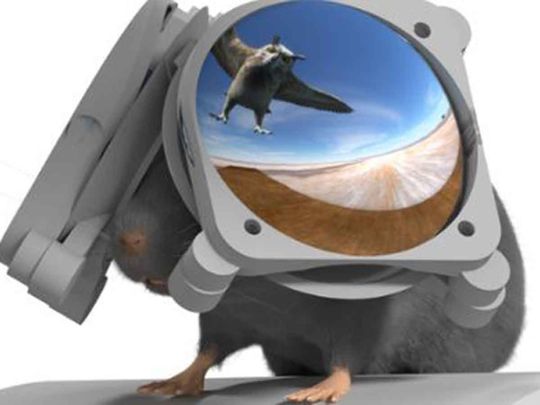
New York: Researchers at Northwestern University in the US have developed new virtual reality (VR) goggles for mice. These miniature goggles, apart from their undeniable cuteness, offer more immersive experiences for mice in laboratory settings. By faithfully simulating natural environments, the researchers can accurately and precisely study the neural circuitry underlying behaviour.
The VR goggles also hold the potential for shedding light on how the human brain adapts and reacts to repeated VR exposure, an area currently little understood. Published in the journal Neuron, the research represents the first instance of using a VR system to simulate an overhead threat.
According to Northwestern’s Daniel Dombeck, the study’s senior author, labs have traditionally used large computer or projection screens to enclose an animal. Comparing this to human experience, he notes it's like watching a TV in your living room, where cues remind you that you're not truly inside the scene. However, VR goggles, akin to Oculus Rift, offer a more immersive experience by occupying the entire field of vision.
By securing the mouse in place on a treadmill, neurobiologists can utilize tools to view and map the brain as the mouse navigates a virtual space. Dombeck emphasizes that VR essentially replicates real environments.
The team designed compact goggles, named Miniature Rodent Stereo Illumination VR (iMRSIV), featuring custom lenses and miniature organic light-emitting diode (OLED) displays. With two lenses and screens—one for each side of the head—the system provides 3D vision, immersing the mouse with a 180-degree field of view while excluding the surrounding environment.
Mapping the mice's brains, Dombeck and his team found that goggle-wearing mice exhibited brain activation patterns similar to freely moving animals. In side-by-side comparisons, goggle-wearing mice engaged with scenes more quickly than those with traditional VR systems.
Looking ahead, Issa expresses interest in exploring scenarios where the mouse is the predator rather than the prey. For example, observing brain activity as a mouse chases a fly involves depth perception and distance estimation, aspects the team aims to capture.
Due to their affordability and simplified laboratory requirements, Dombeck anticipates that these goggles could enhance the accessibility of neurobiology research.












